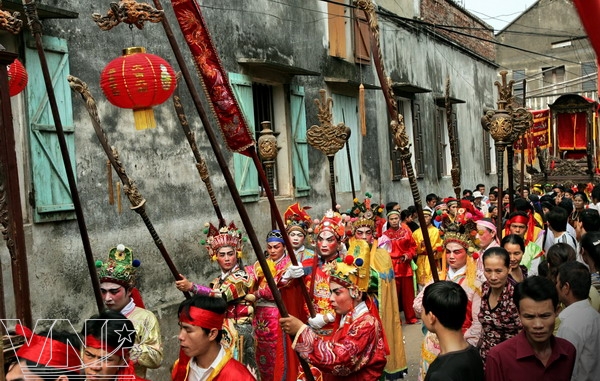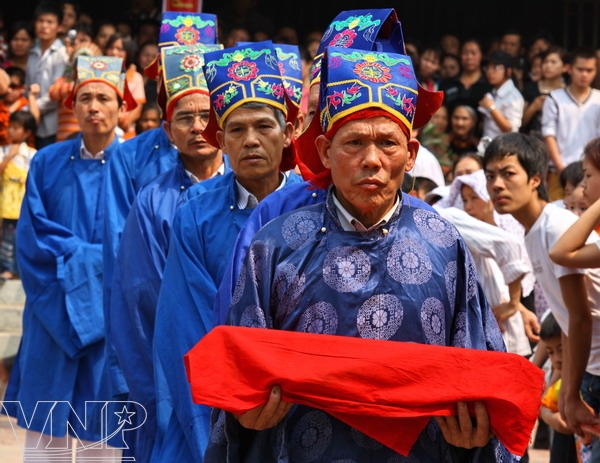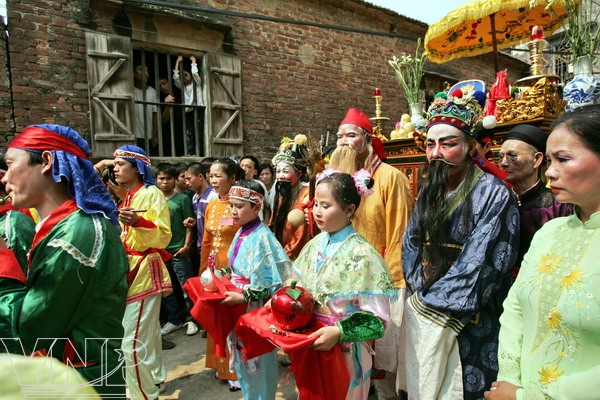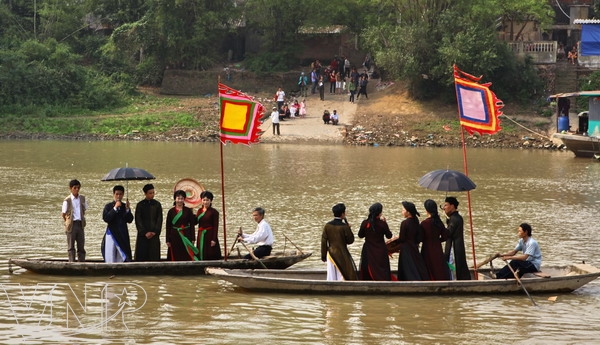From Hanoi to the village, tourists must go through Tho Ha Wharf on the bank of the Cau River that is decorated and lively during the festival. In the village, a wooden gate is erected as a custom that has existed since the Ly Dynasty (1010-1225). At that time on the 5th day of Tet, the king and his entourage rowed on the Red River from Thang Long (present-day Hanoi) to Hai Phong and back down to the Cau River and to the Tho Ha Communal House to drink wine.
 The procession for the patron saint of the village at the festival.  The village elders carry decrees granted by the king to the communal house.  Reenacting the images of the three Abundances (happiness, richness and longevity) with little angels and fairies.  Carrying offerings to the communal house.  Drummers open the festival.  Singing Quan ho (love duets) on the Cau River.  The largest cock-fighting competition in the North is held at the festival. |
After the rites, many cultural activities are held, such as competitions on making pottery and griddle-cakes, cock-fighting, chess and wrestling that attract young people and children. On the Cau River, the villagers organize a boat race and a competition that involves rowing boats to catch ducks. However, the most exciting part is Tho Ha Quan ho (love duet). The sweet and romantic lyrics of the songs fascinate all visitors. The village artists also perform Tuong (classical drama) at the communal house in the evening.
On festival days the villagers practice a very special custom. All families receive and give a warm reception to visitors to the festival because they believe the more visitors that visit their house the luckier the family will be.
The festival provides a chance for the villagers to honour and express their gratitude to the village’s patron saint and Dao Tri Tien, the pottery ancestor. It is a cultural feature of the people in the North. The festival makes a contribution to preserving and promoting the cultural values of the Vietnamese people.
Photos: Trong Chinh – An Thanh Dat



